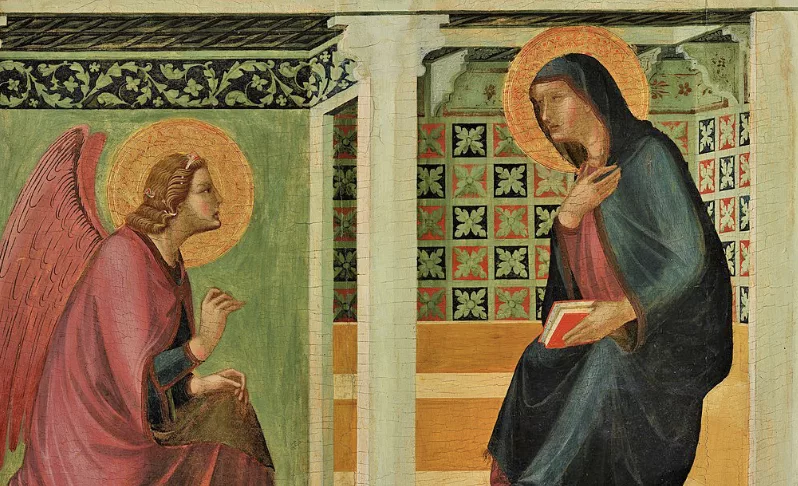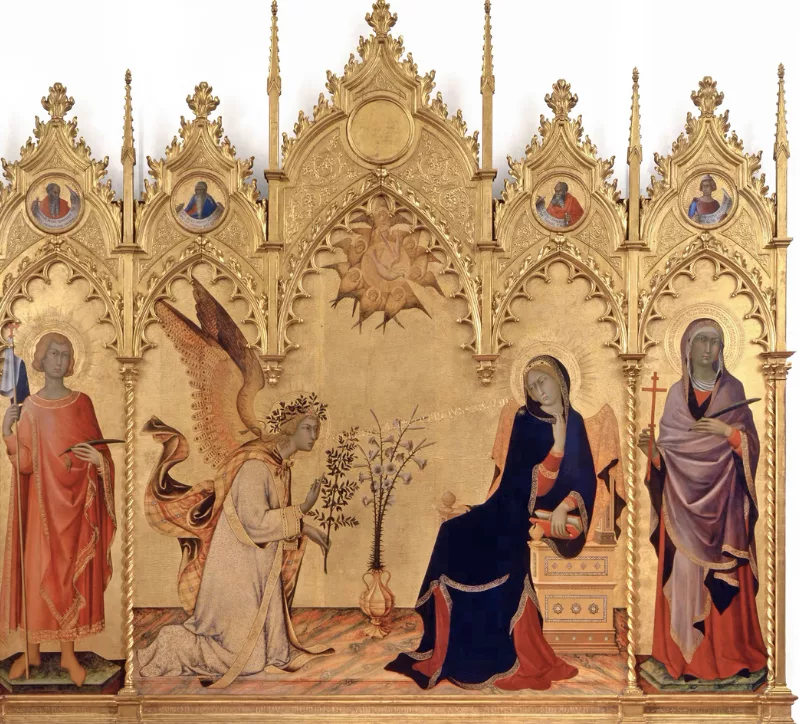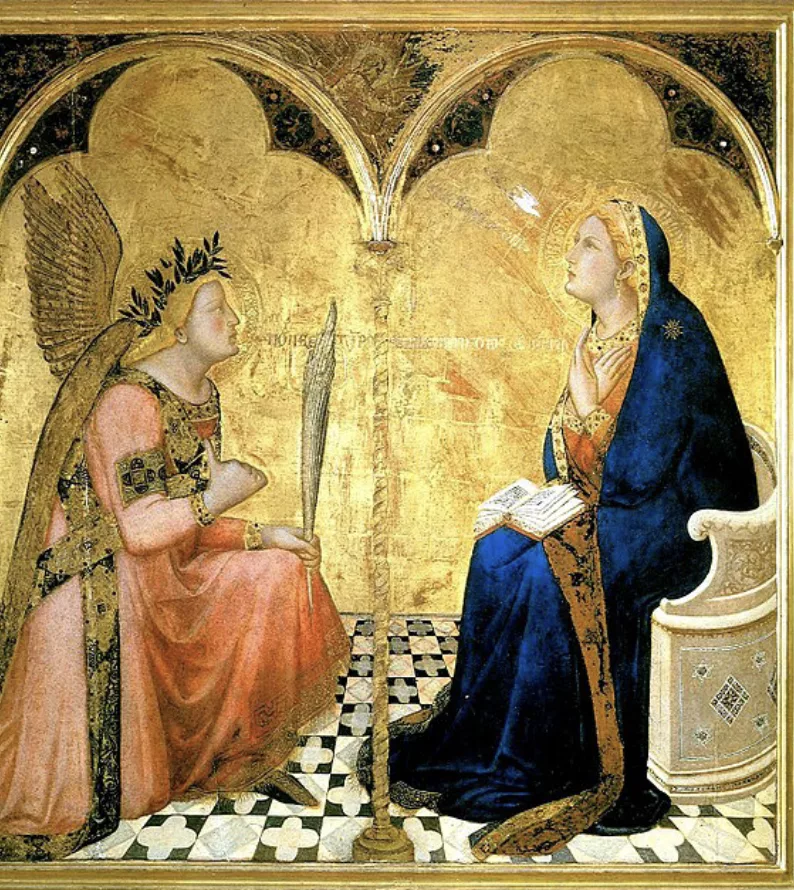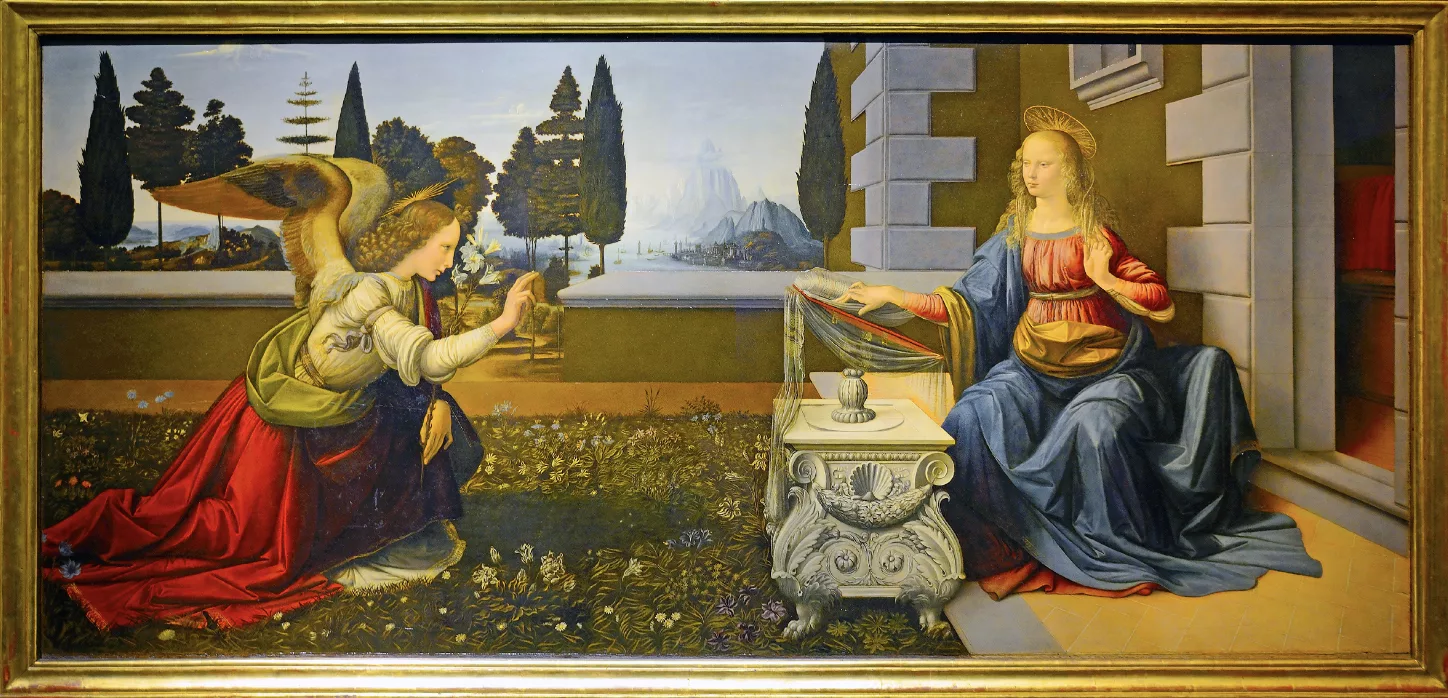
By Anne W. Semmes
With her PhD in Art history, her ability to address an audience without notes with accompanying images, and with her passion for art, Greenwich’s Page Knox is spellbinding. On a Sunday early in December at the Christ Church Greenwich Forum, Knox’s subject was “The Annunciation. “I absolutely love this topic,” she began.
But the annunciation story Page has found, from her 25 plus years of lecturing at Columbia University, is now puzzling her students who are “less and less familiar with the Bible.” When, “This is the moment in which the whole story begins of the Christian faith, the moment in which the word becomes flesh.” In her explaining the concept of the incarnation, “The moment in which the angel, the representative of God comes to the Virgin Mary and tells her that she’s going to bear the son of God and that this is an immaculate conception,” one student had questioned, ‘So it’s the first in vitro?’”

“No, no, no,” responded Page, “It’s really a miraculous event in which God brings his son via the virgin who is a vessel who carries the Christ child and gives birth to him, making God a human on earth. And that human is then brought to redeem our sins. And it’s really the beginning of the Christmas story, but it takes place as you can imagine, nine months earlier.”
So, with 160 churchgoers in attendance, Page would open our eyes in particular to how a 15th century “famous Franciscan friar” named Fra Roberto Caracciolo of Lecce would winningly tell the annunciation story in his sermons while “wandering through Italy.” And what he preached is now told through a scholarly book by Michael Baxandall, “Painting and Experience in Fifteenth Century Italy: A Primer in the Social History of Pictorial Style.”

Fra Roberto would engage his listeners, directing them to take in those annunciation images on church walls, of how “basically, there was a conversation that takes place between the virgin and the angel” as described in Luke 1: 26-38. That conversation he called a “colloquy, a series of five successive spiritual and mental conditions or states attributable to Mary.” Those five states were disquiet, reflection, inquiry, submission, and merit. Page then showed us favorite annunciation paintings that illustrate those five different states.
First off was that “fabulous altar piece” by Simone Martini Lippo Memmi from the 14th century, “made with the extraordinary use of gold leaf…And you can see on either side two important saints, the saint of Siena on the left, St. Margaret on the right with the prophets up above…The prophets are essentially telling that this event was going to happen.” And “the reaction when Mary hears the salutation – she was troubled, as it says in Luke. Fra Roberto suggested her disquiet came from wonder. “In her humility, she was astonished and amazed.”

And if we come to the Met’s current show, “Siena: The Rise of Painting, 1300-1350” [on view to January 26], Page noted, “You will see one of the standouts of the show is Pietro Lorenzetti’s ‘Annunciation.’ You can see that the hand of God is actually represented coming out of the cloud that sends the Holy Spirit down into Mary…But this would be the second scenario which we would call reflection…This shows the prudence of the Virgin thinking maybe I need to think about this a little bit before I say yes to this.”
Another “fabulous artist” she named was Piero Della Francesca. “His phenomenal example of the Annunciation is part of a larger pictorial series called ‘The Legend of the True Cross.’ And this is also a moment of interrogation. The Virgin wants to ask the angel some questions. How is this going to happen? I’m a virgin – how am I going to have a child?” Surely an inquiring Mary.
Page next named the “Annunciation” of Ambrosio Lorenzetti, the brother of artist Pietro, as “one of the most beautiful pieces in the Met’s Siena show, and actually coming out of Siena…This is a piece where you can see the words coming out of the angel’s mouth, and the virgin looks upward and says, ‘I accept.’ And note that the Virgin’s crossed hands are the form of the cross. “So, this is the moment of what we would call submission, where she agrees.”

Perhaps that fifth state of merit is best exemplified by Leonardo da Vinci. “And Leonardo is someone who is not terribly religious,” noted Page, “but he’s aware of all the things that are being said about the annunciation.” And in his Annunciation, “The focus is in a much more equal relationship between the two [angel and Mary]. The focus really is on plants, on the garden, the backdrop, which creates this kind of smoky landscape…In Mary’s expression you see all of those emotions, the idea of disquiet, the idea of inquiry, the idea of submission. It’s all there in a very equal relationship.”
“And she places her hand very importantly on the book. Leonardo really wants to give you the sense that the Virgin is intelligent, that she’s engaging, she’s also thoughtful…thinking about all of the things that are going to change in the world because of this very important announcement.”
Leonardo, she told, “also leads us into the high Renaissance… He’s making us aware of the complexities, the psychological complexities that are going on, which is something that he was fascinated with, which artists will then really look to not only in the Renaissance, but in the Baroque era, in the neo-classical era, all the way up to the works of our time.”

